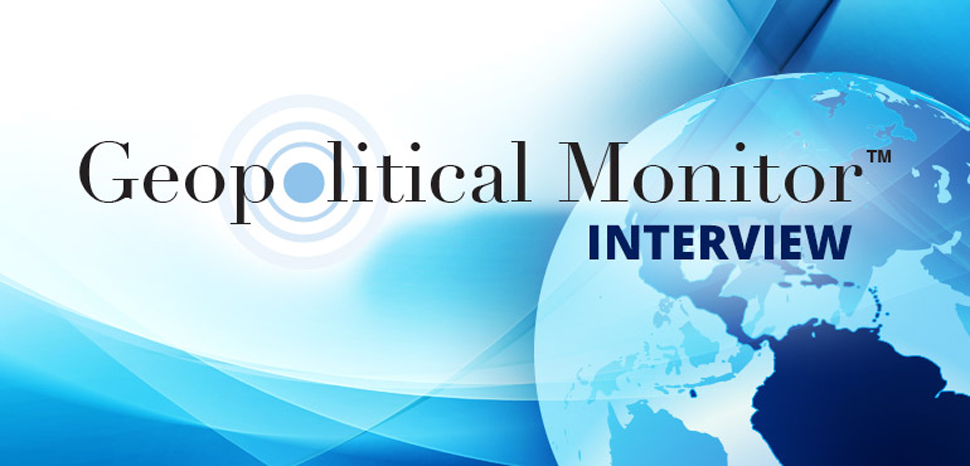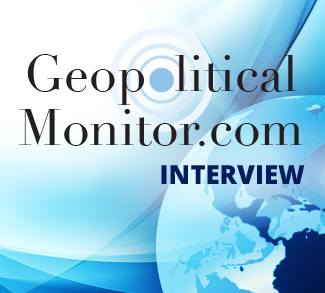In the wake of the deadly Toronto van attack of April 23, we sit down with Maxime Fiset of the Centre for the Prevention of Radicalization Leading to Violence (CPRLV) to discuss new poles of radicalization and what can be done to curb their spread.
What are some new hubs of radicalization that your organization has been tracking but perhaps are generally overlooked in the mainstream media?
The Centre for the Prevention of Radicalization Leading to Violence (CPRLV) has been paying attention to a variety of extremist ideological tendencies in Canada and internationally as violent extremism has no borders. Among them, a few have been overlooked by the mainstream media, including very vocal and increasingly radical subculture hubs such as the alt-right, the incels, and men’s rights activists movement or the broad category of sovereign citizens/Freemen on the land.
These are not, per se, new ideologies, as every one of these tendencies have given way to violent behaviors in the past, but the very fact that they are organizing in Facebook private/secret groups or elsewhere on the Internet without supervision is worrisome enough. These virtual subcultures seem to have replaced some of the more “traditional” forms of radicalization, such as the skinhead lifestyle or old-school communist movements. It’s worth noting that they satisfy a demand that has always existed: alternate ideologies, lifestyles, and subcultures.
Could you elaborate on how the radicalization process unfolds within these communities?
It depends on the group. There are permanent tendencies, such as increasing one’s feeling of perceived injustice, decreasing one’s capability of understand external (to self) events, making one feel that they are being “targeted” by an almost omnipotent enemy, etc. Those have not changed in the history of radicalization.
What is rather new is that these groups often make a concerted effort to “awaken” non-radicals.
What is rather new is that these groups often make a concerted effort to “awaken” non-radicals (in the alt-right, for example, this is called “to redpill normies”), by gathering the most efficient propaganda material, or even creating some, at a rhythm never observed in the pre-Internet era. To awaken someone is essentially to find the issue most sensitive in one’s ideological perception of how the world is and should be, and to apply the right “argument” (often logical fallacies or false double-standards) to make them “aware” of some “hidden or omnipotent truth.” This feeling of being “woke” is often so enthralling that the recruit will themselves try and convince new members to join. This is true for jihadism as it is for far-right and far-left extremism. Although this was always a way in which extremist groups open to recruitment functioned, the scale and the speed are now unprecedented. It’s worth mentioning that the “meme culture” (mostly in the alt-right) is terrifically efficient in creating eye-catching virtual propaganda that is both simple and highly relatable, making it deadly effective
…And what about the process of de-radicalization? How can policymakers mitigate the spread and influence of these communities, and/or lessen the chances that some individuals within them will turn to violence?
Short-term, very little can be done to mitigate the spread of these communities. The hard approach, that involves criminalizing behaviors and arresting deviants has had some success, but eventually the extremists will adapt and this strategy has several implications in terms of civil rights. So short-term: police work and direct prevention/intervention in schools and communities (without targeting specific populations). This prevention/intervention part involves training teachers, front-line staff, and stakeholders, a work being done by the CPRLV, in recognizing radicalization and correct ways of intervening before and after behaviors are observed. It involves adding a “prevent radicalization” tool to the professionals’ toolkit.
Medium-term involves creating a culture of prevention where needed, and this is much, much harder than any short-term solution, but also much more efficient in decreasing the amount of cases that eventually end in violent behavior.
Long-term requires massive changes in the school system so to include critical thinking, digital literacy, and some more advanced humanities to protect youth from being targeted by virtual agents of radicalization, and to adapt to a generation that is growing ever more outside of the school system, including in areas that teachers are actually not capable of intervening.
And even applying all of these strategies, some will commit violent acts. But we observe that social cohesion, low-GINI, high education, pacifist cultural norms and a non-polarized political debate are contexts in which domestic terrorism has a hard time thriving. Let us not forget that radicalization may lead to violence, but that violence may also lead to radicalization
Many people participate in these communities without ever resorting to violence. What makes one individual more susceptible to radicalization than another?
Risk factors.
Several individuals will radicalize without ever resorting to openly violent behavior. This is even the norm in most extremist circles.
We have underlined risk factors that may cause radicalization leading to violence, in the following categories: relational, personal, social identity, psychological, and external.
Unsurprisingly, some are omnipresent in cases of radicalization leading to violence, such as being exposed to extremist discourses or propaganda and a feeling of perceived injustice (that may be even more poignant when this injustice is related to the identity construct of an individual).
Individual actors tend to suffer from social isolation and cognitive rigidity, that both make them more at risk to engage in violent behaviors.
Apart from that, radicals tend to operate in two main ways: in groups or individually. Individual actors tend to suffer from social isolation and cognitive rigidity, that both make them more at risk to engage in violent behaviors: one’s perceived lack of “something to lose” paired with one’s incapacity to adapt to a “normal” social context are two ingredients of the perfect storm.
Group actors I don’t feel qualified enough to describe more in depth, although “being part of the group” seems to be a reason for many to engage in deviant behaviors that may count as radicalization leading to violence or lead to it.
In both cases, a positive feedback loop brings them always further from normality, until they come to a crossroad between two curves: decreasing non-violent ways of militancy and increasing sense of urgency. This is where ideological violence usually begins, although some groups such as skinheads may engage in daily violent behaviors for reasons no other than fun, petty criminality, or gang clashes.
Do you believe that radicalization itself is a growing trend, or is its import being amplified by the nature of the modern media and easier access to deadly weapons, whether it’s an AR-15 or a rental van?
Why not both? There is a very actual realization that radicalization leading to violence is a thing, a psychosocial issue, all the while terrorism has changed in nature and methods. RLV (radicalization leading to violence) has certainly always existed, and always will, but the communicational appeal of terrorism as a political tool is increased thousandfold by both the media coverage and policy-makers decisions.
The correct way to see terrorism and violent or hateful acts is paradoxical: to ignore and “normalize” them.
This is the most “radical” problem of terrorism: It is not very efficient or even very deadly, and it’s VERY cheap to use, but its effect on public opinion and policy makers is worth millions, if not billions of dollars in advertising. The correct way to see terrorism and violent or hateful acts is paradoxical: to ignore and “normalize” them (as in understanding that it is inevitable while still fighting it) is the only way to deprive them of their power, but that would require so much political capital that it would be the undoing of any governing party. And thus democracy is, again, flawed in its paradoxical incapacity to prevent its opposite, just like in Karl Popper’s paradox of tolerance.
Could the Facebook post attributed to Alek Minassian be expected to run afoul of any existing Canadian laws, particularly in its praise of Elliot Rodger (a self-declared ‘incel’ who killed seven people in 2014)?
Yes. Article 83.221 of the criminal code (prohibiting the promotion or advocating of terrorism) could be invoked to prosecute his communicative salute of Elliot Rodger. His statement in the “incel rebellion” could as well.
What are the characteristics shared by all these various communities and ideologies putting ‘young, angry, and socially isolated’ men on the path toward violence?
As mentioned above, and:
- A shared feeling of perceived injustice (factual or not)
- A feeling of belonging, of being understood attached to participating to such communities
- A new identity construct based on the belonging to such communities (facultative but recurrent)
- The creation of a common narrative explaining the reasons for the members’ perceived hardships, almost always blaming external factors or individuals (scapegoats) (read: external locus of control)
- A perception that one’s future can never meet one’s expectations (thus generating more feeling of perceived injustice while adding a “nothing to lose” ingredient to the recipe)
- Psychological distress or deviant behaviors in the outside world, leading to marginalization
- A feeling of entitlement towards society, for they see their position of traditional dominance being challenged by new progressive narratives.
- The belief that a significant truth was once spoken, but that this truth was lost or perverted by modernity, and the quest for restoration of that truth and its ideal shaping of society. (Proto, almost mystic conservatism/chauvinism). The distress caused by society perceptively always moving further from that truth, reinforcing points 4, 5, 6 and 7 and creating a feeling of urgency.
- The feeling one’s group is perceptively targeted by ideological enemies (police corps, mainstream media, antifa, etc.), reinforcing points 4, 5, 6 and 7 and creating a feeling of rarefication of non-violent ways of militancy (facultative).
The Centre for the Prevention of Radicalization Leading to Violence (CPRLV), which was created in March 2015 by the City of Montréal with the support of the Quebec Government, and the active involvement of community and institutional partners, is a pioneer in Canada and North America. It is the first independent non-profit organization aimed at preventing violent radicalization and providing support to individuals affected by the phenomenon, be they individuals who are radicalized or undergoing radicalization, family or friends of such individuals, teachers, professionals or field workers. The CPRLV is a provincially mandated organization whose work also includes the prevention of hate crimes and incidents as well as the provision of support and counselling for victims of such acts.
The opinions, beliefs, and viewpoints expressed by the authors are theirs alone and don’t reflect any official position of Geopoliticalmonitor.com.


